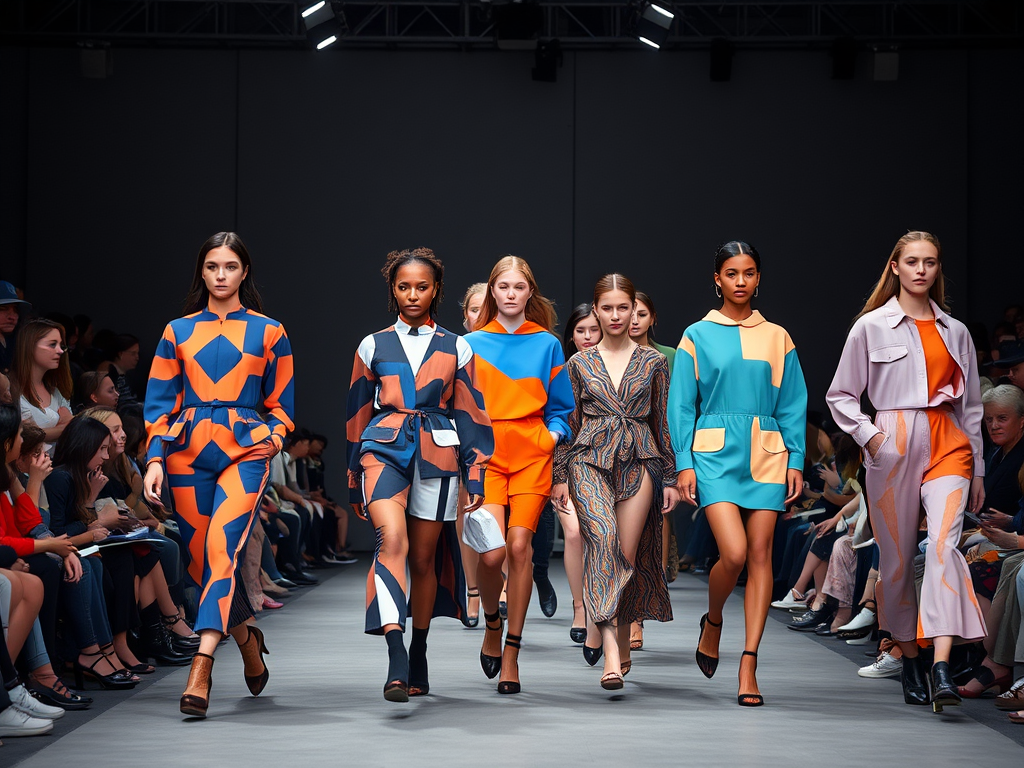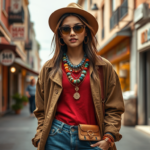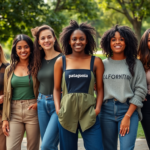Runway fashion is a vibrant reflection of our culture, creativity, and the times we live in. As designers present their latest collections, patterns and prints emerge as key elements that contribute to the overall narrative. By analyzing these artistic expressions, we can uncover deeper meanings, trends, and the emotional resonance they carry. Patterns come in countless forms, each with its own unique story to tell. This exploration not only enhances our appreciation for fashion but also provides insight into the designers’ intentions. From floral motifs to abstract designs, each pattern plays a significant role in the visual spectacle of fashion shows.
The narrative of patterns in fashion isn’t always linear; it evolves, shifts, and transforms over time. Many runway looks seamlessly blend history with modernity, paying homage to past styles while pushing boundaries. Understanding the evolution of patterns gives us the context we need to appreciate current trends. Designers today look back at the archives of fashion history to inspire their next creations. This intricate dance of honoring tradition while innovating is at the heart of runway fashion. As we dissect these patterns, we’ll also consider their socio-cultural implications and the feedback loop between the runway and the street.
The Evolution of Patterns in Fashion

Fashion is inherently cyclical, with most patterns re-emerging after a few decades. Understanding the history of patterns allows us to ground ourselves in an ever-changing industry. From wild prints to minimalist patterns, the runway has seen a spectrum of designs that evoke nostalgia while looking towards the future. Classic florals of the ’60s, known for their soft pastels and romantic vibes, gave way to the bold geometric shapes of the ’80s. Each era creates a distinctive identity fueled by societal changes. As we move through time, certain patterns foreshadow radical transformations within the fashion landscape, bridging generations.
Specific patterns echo the sentiments and moods of their times. For example:
- Houndstooth: Originating in the 1930s, it has a timeless appeal reminiscent of sophistication.
- Animal Prints: Always a symbol of daring choices in fashion, they became popular in the 1970s.
- Polka Dots: Typically associated with fun and playfulness, this pattern surged during the 1950s.
Understanding the Language of Prints
In the world of fashion, prints speak volumes. Each design carries a message, often inspired by cultural influences, nature, or social movements. When we look at a runway piece adorned with a particular pattern, we instinctively respond to its visual language. This response can be emotional, nostalgic, or purely aesthetic. Designers carefully choose prints, infusing their collections with meaning. By analyzing these prints, one can decode the unspoken messages and narratives behind the clothing.
There are several predominant print types that have stood the test of time, including:
- Floral: Evokes femininity and romance, often used in spring collections.
- Stripes: Represents versatility and simplicity, fitting various styles from casual to formal.
- Paisley: Often symbolizing bohemian vibes and has ancient origins.
The Impact of Color Theory on Patterns
Color theory is a vital component in the realm of fashion design. It has the power to enhance or entirely alter the perception of a pattern. Exciting combinations can create visual drama, while serene palettes may incite calmness. Understanding how colors work together can significantly influence the print’s overall aesthetic appeal. Designers often employ harmonious color schemes to ensure that their patterns resonate well in a broader context. Through the use of contrast and synergy in color, a pattern can evoke specific emotions and respond positively to viewers.
| Category | Examples | Emotional Response |
|---|---|---|
| Florals | Roses, Daisies | Romance, Softness |
| Geometric | Triangles, Squares | Structured, Modern |
| Animal Prints | Leopard, Zebra | Boldness, Edginess |
Trends in Modern Pattern Use
Contemporary runway trends show a remarkable shift towards eclectic and diverse pattern usage. Designers are increasingly experimenting with clashing prints, mixing different styles and eras. While this may seem chaotic at first glance, there is often a method to the madness. Bold layering techniques highlight the individual visual appeal of each piece. Furthermore, digital prints have become a staple, allowing designers to explore unlimited possibilities. This evolution reflects the fast-paced nature of modern fashion and the desire for individual expression.
The influence of culture on pattern design cannot be overstated. Globalization has allowed designers to incorporate elements from varying traditions into their work. Patterns born from African textiles, Asian motifs, or even indigenous cultures have made their way onto the runway. This exchange enriches the fashion landscape, allowing for greater representation and diversity. The patterns we see are conversations between different cultures, each telling a unique story. As the world grows more interconnected, the lines between local and global continue to blur.
The Role of Technology in Pattern Creation
Technology has had a transformative impact on how patterns and prints are created. Advancements in design software and printing techniques have opened new doors for creativity. Designers leverage digital tools to produce intricate patterns that once would have been impossible. From virtual reality to 3D printing, technology empowers designers to push boundaries. This evolution is not just about aesthetics; it also enhances the efficiency of the production process. As we move forward, the fusion of technology and fashion will undoubtedly continue to reshape runway looks.
Conclusion
Analyzing the patterns and prints featured in runway looks provides a rich tapestry of insights into the fashion industry. Each design serves as a medium through which cultural narratives and emotional responses are communicated. From historic influences to modern innovations, patterns act as a bridge linking the past with the present. The exploration of these elements reveals the intricate layers of meaning embedded in contemporary fashion. As we continue to analyze runway trends, we unveil a world where art and design intersect, creating a vibrant tapestry that signals the future of fashion.
Frequently Asked Questions
- What are the most popular patterns seen on the runway? Some of the most popular patterns include floral, stripes, and polka dots, each serving to convey different themes and emotions.
- How do cultural influences shape runway prints? Cultural motifs and designs often inspire contemporary patterns, as designers seek to celebrate diversity and heritage.
- What role does color play in the effectiveness of a pattern? Color significantly impacts how a pattern is perceived, with contrasting colors bringing drama and harmonious colors conveying tranquility.
- Are there any specific tools used in creating patterns for fashion? Yes, many designers use software like Adobe Illustrator and Photoshop for digital pattern creation, along with CAD (Computer-Aided Design) programs.
- How can I incorporate runway patterns into my wardrobe? Start with key pieces like scarves, bags, or shoes that feature trendy patterns, then gradually introduce them into your daily outfits.





